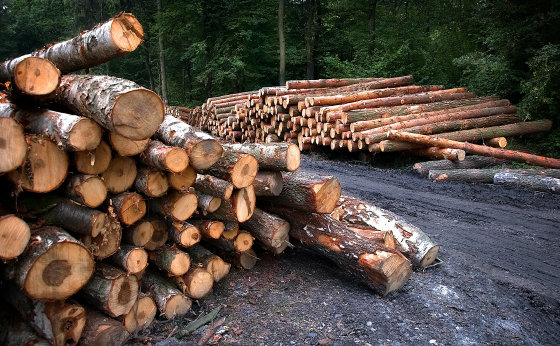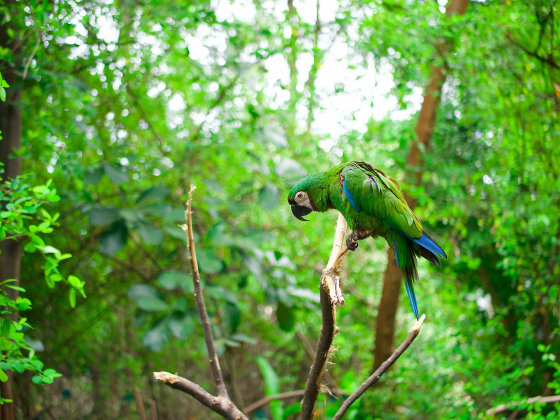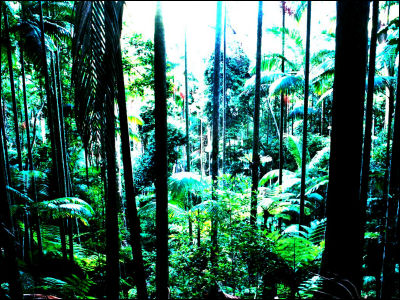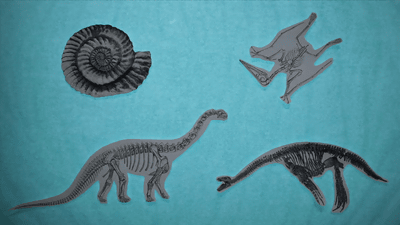Rainforest carbon capacity has reached its limit and could become a carbon source soon

Researchers have actually gone to the rainforests in the Amazon and Africa's interiors and have been measuring the diameter and height of trees for 30 years, and the carbon absorption capacity of these rainforests has reached its limit. It has been shown that rainforests could be a 'carbon emission site.'
Asynchronous carbon sink saturation in African and Amazonian tropical forests | Nature
Tropical forests losing their ability to absorb carbon, study finds | Environment | The Guardian
https://www.theguardian.com/environment/2020/mar/04/tropical-forests-losing-their-ability-to-absorb-carbon-study-finds
Studies conducted to date have shown that over the past three decades, carbon capture by tropical forests has been declining. Deforestation, drought, and rising temperatures are the causes of the decline, but according to Professor Simon Lewis of Reed University, if temperature and logging continue, carbon absorption will continue to decline, and by 2060 the rainforest Rather, it could be a carbon source.

In a recent study published on March 4, 2020, Professor Lewis points out that climate change will be more severe when tropical forests are a source of carbon. 'In the past, humans have been very lucky, because rainforests have cleaned up the pollution we have created. But rainforests will not always do the same. We need to curb fossil fuel emissions before the
Lewis and colleagues have tracked 300,000 trees over the past 30 years. Researchers said they actually took data to two regions, Africa and Amazon. The researchers measured the diameter and height of trees growing in 565 locations in two regions every few years, and measured the amount of carbon in living and dead trees. We have found that the amount of carbon absorbed has decreased first. And, following the Amazon, African trees are also rapidly absorbing less. The earlier decline in the Amazon is thought to be due to higher temperatures, rapid rises in temperature and frequent and severe droughts on the Amazon trees.
Researchers' observations and statistical models predict that the Amazon rainforest will begin to become a source of carbon dioxide in mid-2030.

At the 26th Conference of the Parties to the United Nations Framework Convention on Climate Change (COP26) scheduled to be held in November 2020, a plan for `` Net Zero Emission '' to equalize the emission and removal of artificial greenhouse gases by the middle of this century Discussions will be held. While some countries are planning ways to offset emissions and removals by growing new forests, the findings show that relying on tropical forests cannot offset large emissions. Is shown.
Lewis said, “Emissions are offsetting, but in reality, all countries and all sectors need to remove small amounts of residual emissions from the atmosphere and reach zero emissions. Offsetting is just a marketing tool used by companies trying to do their business the same way. '
Tropical rainforests capture carbon from the atmosphere peaked at 46 billion tons in the 1990s. This represents 17% of the artificially generated carbon footprint. However, nowadays carbon absorption has fallen to about one third of the 1990s.
Many scientists are afraid of “turning points” in the climate system. Once the tipping point has passed, the melting of ice and the loss of forests will not stop, but it is said that there is only a little time left before humanity reaches the tipping point.
There is a possibility that the global environment has come to `` places that can not return anymore ''-gigazine

When it comes to forests, if they become a carbon source at the tipping point, feedback mechanisms could have a significant negative impact on global warming.
Related Posts:
in Science, Posted by darkhorse_log






